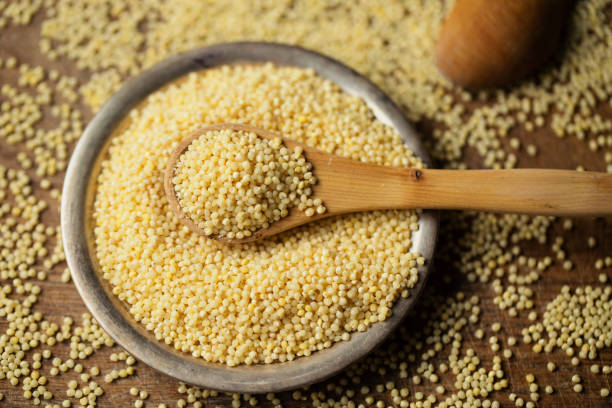
Millet popped up when I was on the lookout for nutritious foods that can make a real difference, especially for managing diabetes. I’d never heard of it before. However, over the past month, I have witnessed firsthand how incorporating millets into your diet can stabilize blood sugar levels.
What’s a Millet?
Millets, often overlooked in modern diets, are ancient grains that have been cultivated for thousands of years. These tiny grains pack a powerful nutritional punch, offering loads of health benefits. They are gluten-free, rich in fiber, and packed with essential nutrients. For individuals managing diabetes or looking to improve their overall health, millets can be particularly beneficial due to their unique composition and nutritional profile. These tiny grains have been a staple in many traditional diets around the world for centuries, and are now gaining recognition for their health benefits, particularly in managing diabetes.
Stabilizing Blood Sugar Levels
One of the most remarkable observations I made was how incorporating millets into the diet helped stabilize blood sugar levels. Over a month-long period, I monitored the blood sugar levels of a diabetic patient who included millets in their daily meals. The results were impressive. There was a noticeable improvement in their blood sugar stability, reducing the peaks and troughs that are common in diabetes management.
Promoting Heart Health
In addition to their role in blood sugar management, millets contribute significantly to heart health. The high levels of magnesium and potassium found in these grains help to regulate blood pressure and reduce the risk of cardiovascular diseases. The antioxidants present in millets, such as phenolic acids and flavonoids, combat oxidative stress and inflammation, further protecting the heart and other organs from damage. Moreover, the insoluble fiber in millets aids in lowering cholesterol levels, thereby supporting overall cardiovascular health.
Packed With Nutritional Value
Millets are a rich source of essential nutrients, including fiber, vitamins, and minerals. They are high in magnesium, phosphorus, and potassium, which are vital for maintaining healthy bodily functions. The fiber content in millets is particularly noteworthy; it aids in digestion, promotes satiety, and helps regulate blood sugar levels. Unlike refined grains, millets have a low glycemic index, meaning they release glucose into the bloodstream at a slower rate, preventing sudden spikes in blood sugar. This makes them an excellent dietary choice for individuals with diabetes or those at risk of developing the condition.
Beyond their health benefits, millets are also a sustainable food choice. They are hardy crops that require less water and fewer inputs than other grains, making them an environmentally friendly option. Their ability to grow in arid and semi-arid regions helps promote food security in areas prone to drought. Additionally, millets are incredibly versatile in the kitchen. They can be used in a variety of dishes, from porridges and salads to breads and snacks, making it easy to incorporate them into diverse culinary traditions.
Conclusion
Incorporating millets into your diet can be a game-changer, especially if you are managing diabetes. These nutrient-dense grains offer numerous health benefits and can be prepared in a variety of delicious ways. My personal experience and the positive feedback from my diabetic patients underscore the potential of millets in promoting better health. If you haven’t yet tried millets, I encourage you to do so and experience their benefits for yourself. Remember, every small step towards healthier eating counts, and millets might just be the perfect addition to your dietary routine.